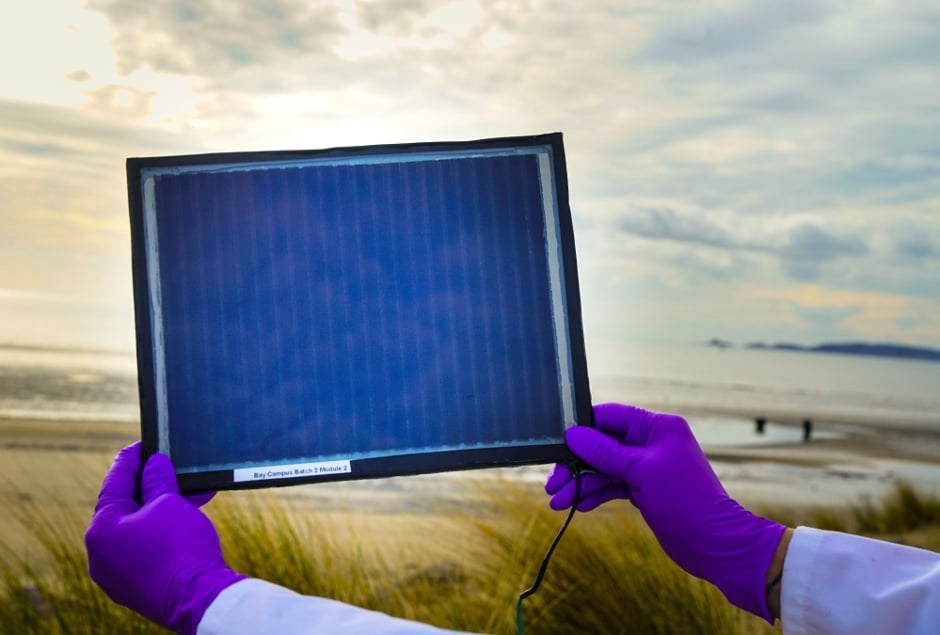
The breakthrough by researchers at Swansea University shows that the technology works at scale, which is crucial for adoption by industry.
Each of the individual cells forming the module is made of perovskite, which can be produced more easily and economically than silicon, which is commonly used in solar cells.
Perovskite solar cells have also proved to be highly efficient, with scores for power conversion efficiency (PCE) as high as 22 per cent on small lab samples.
The team works for the SPECIFIC Innovation and Knowledge Centre led by Swansea University. They used an existing type of cell, a Carbon Perovskite Solar Cell (C-PSC), made of different layers - titania, zirconia and carbon on top - which are all printable.
Though their efficiency is lower than other perovskite cell types, C-PSCs do not degrade as quickly, having already proved over one year’s stable operation under illumination.
The Swansea team's breakthrough comes from the optimisation of the printing process on glass substrates. They ensured the patterned layers were perfectly aligned through a method called registration, which is well-known in the printing industry.
According to the University, the entire fabrication process was carried out in air, at ambient conditions, without requiring the costly high-vacuum processes which are needed for silicon manufacture.
The Swansea team’s modules are said to have recorded up to 6.3 per cent power conversion efficiency (PCE) when assessed against the “1 sun” standard (full simulated sunlight). According to the University, this is world-leading for a C-PSC device of this size.
The modules also achieved 11 per cent PCE at 200 lux, roughly equivalent to light levels in an average living room, and 18 per cent PCE at 1000 lux, equating to light levels in an average supermarket.
Dr Francesca De Rossi, technology transfer fellow at Swansea University’s SPECIFIC Innovation and Knowledge Centre, said: “Our work shows that perovskite solar cells can deliver good performance even when produced on a larger scale than reported so far within the scientific community. This is vital in making it economical and appealing for industry to manufacture them.
“The key to our success was the screen printing process. We optimised this to avoid defects caused by printing such large areas. Accurate registration of layers and patterning the blocking layer helped improve connections between cells, boosting overall performance.
“There is more work still to do, for example on increasing the active area - the percentage of the substrate surface that is actually used for producing power. We are already working on it.
“But this is an important breakthrough by our team, which can help pave the way for the next generation of solar cells.”
The research was published in Advanced Materials Technologies and undertaken by researchers at SPECIFIC Innovation and Knowledge Centre, which is funded by EPSRC, Innovate UK and the European Regional Development Fund through the Welsh Government.




Swiss geoengineering start-up targets methane removal
No mention whatsoever about the effect of increased methane levels/iron chloride in the ocean on the pH and chemical properties of the ocean - are we...